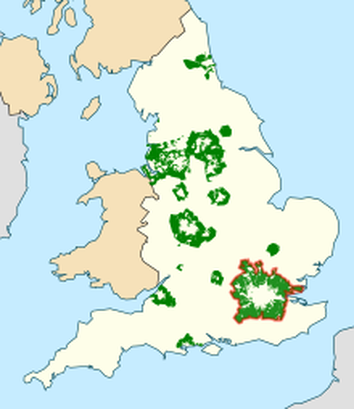
What is the Green Belt?
The fundamental aim of Green Belt policy is to prevent urban sprawl by keeping land permanently open; the essential characteristics of Green Belts are their openness and their permanence. Green Belt serves 5 purposes: (a) to check the unrestricted sprawl of large built-up areas; (b) to prevent neighbouring towns merging into one another; (c) to assist in safeguarding the countryside from encroachment; (d) to preserve the setting and special character of historic towns; and (e) to assist in urban regeneration, by encouraging the recycling of derelict and other urban land. Additional benefits of Green Belt: (a) Recreation, sport, health - Green Belt protection ensures we enjoy open land and countryside. Our Green Belt includes a country park, playing fields, they support sport and recreation and health – including reducing stress by providing peaceful, breathing spaces and public rights of way (b) Eco-system benefits - Different types of open land provide multiple eco-system benefits which include urban cooling, improved air quality, flood protection and carbon absorption (especially woodland areas). (c) Future proofing - As Elstree and Borehamwood has grown so drastically in recent years, so more people come to rely on protected green spaces for the many benefits they provide. Protected Green Belt lands should be enhanced to provide more benefits in future. For further information see: (Use the BACK button to return to ebgreenbelt.org) https://www.gov.uk/guidance/national-planning-policy-framework/13-protecting-green-belt-land https://researchbriefings.parliament.uk/ResearchBriefing/Summary/SN00934 Wikipedia on the the Green Belt
|

